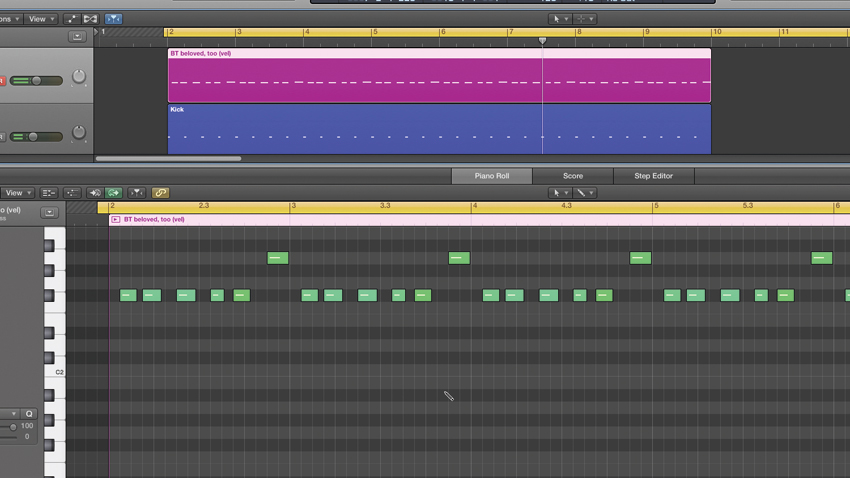How to weed out a bloated mix
Even the most basic mixes can suffer from being overloaded and devoid of space. Here's what you can do about it

MIXING WEEK: We demonstrate a range of space-carving tactics that can be deployed on a cluttered track to turn it into a clear, spacious mix.

Step 1: This track might only have six parts playing but already it’s sounding confused, repetitive and overly full. The kick and bass, in particular, are drowning under the weight of insistent synth hooks, while the pad is fighting for space, too.

Step 2: Let’s start with the synth hooks. We select the first part to play every two bars (rather than every bar) and use the second one only every four bars. We add an autopanner to the first part, so that each time it plays, it switches from left to right.

Step 3: Next, let’s shape the pad. First, we drop its output level. We don’t need the pad’s low mid-range content, so next we use a low-shelf EQ to tame those frequencies. Then we set up a compressor, sidechained from the kick drum, to duck the level, before finally increasing the stereo width.

Step 4: Let’s look at the kick and bass relationship. Beats 1 and 4 of each bar cause the kick and bass to play at the same time. In the bass part, we shift the first note a 16th-note later and the note on beat 4 a 16th-note earlier.

Step 5: Now things are under control, the kick can be louder, so we boost it 3dB. Next, we add a spacey reverb to the pad with a long decay time, pushing it back in the mix. We set the Mix balance at 50% to create a spacious treatment.

Step 6: We can also - carefully - add delays to the bass sequences. We set up Waves’ H-Delay on an auxiliary buss and set the delay time to a dotted eighth-note. Then we use the HiPass and LoPass dials to scoop out the low and high content, and drop the auxiliary return level.
Want all the hottest music and gear news, reviews, deals, features and more, direct to your inbox? Sign up here.
MusicRadar's Mixing week is brought to you in association with Softube. Check out the Mixing week hub page for more mixing tutorials and tips.
Future Music is the number one magazine for today's producers. Packed with technique and technology we'll help you make great new music. All-access artist interviews, in-depth gear reviews, essential production tutorials and much more. Every marvellous monthly edition features reliable reviews of the latest and greatest hardware and software technology and techniques, unparalleled advice, in-depth interviews, sensational free samples and so much more to improve the experience and outcome of your music-making.
